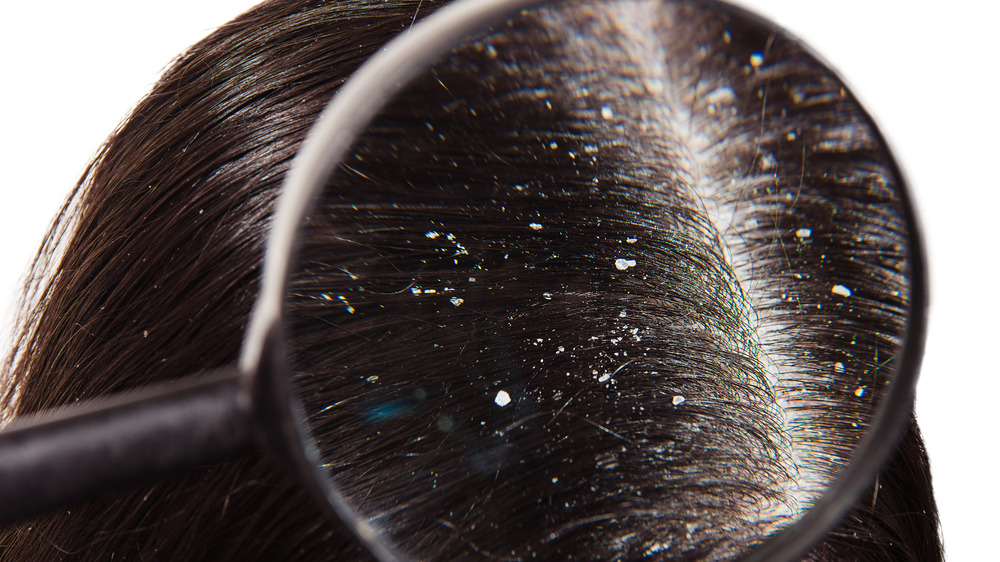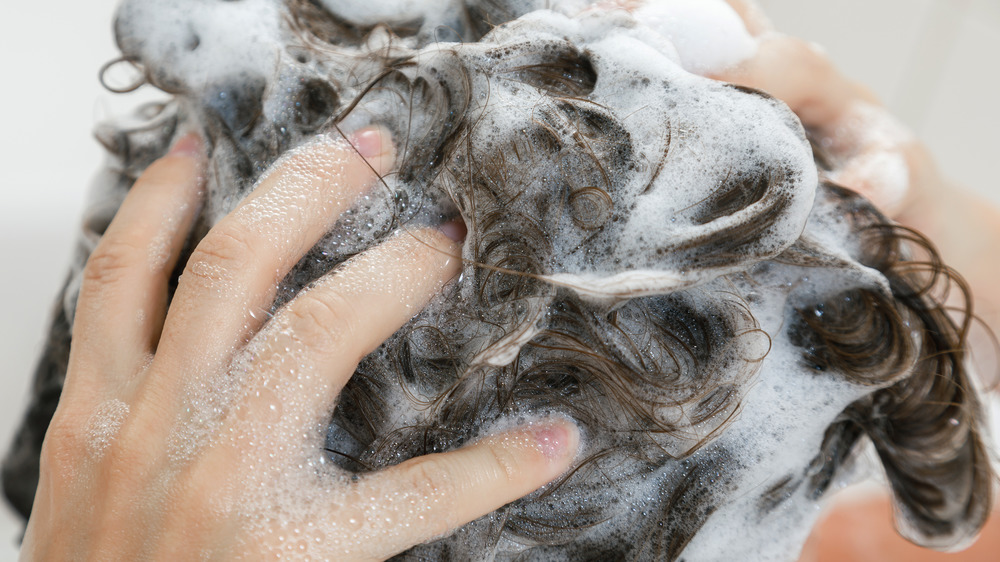Does Stress Really Give You Dandruff?
Have you ever put on a crisp black shirt in the morning, only to find it spattered with white flakes by the evening? Are you itching your scalp so much you'd try anything to make it stop? Have you wondered where those white flakes across your eyebrows even came from? If you've said yes to any of these questions, you are not alone. It is estimated that dandruff and seborrheic dermatitis affects nearly half of the adult population (via Journal of Clinical and Investigative Dermatology). For a condition so common you would think the causes have been well established by now, but that's not quite the case.
Seborrheic dermatitis and dandruff are on a continuous spectrum of the same disease, with the prominent difference being the affected area. Dandruff is localized mostly to the scalp but can spread to the eyebrows as well, while seborrheic dermatitis can affect the face, the area behind the ears, upper chest, and other areas of the body.
Symptoms of the most common form of dandruff are the development of fine, white, diffuse scales without underlying or visible inflammation on the scalp. Some people may only experience the scales or flakes, while others may also have accompanied itchiness.
Potential causes of dandruff
While the causes of seborrheic dermatitis and dandruff are still being studied, it is clear that they are complex. Through all of the research conducted thus far, there are a few key facts scientists are more certain on. Dandruff typically affects men more often than women and tends to peak between the ages of 30 to 40 years old.
According to the American Academy of Dermatology, there are several factors which may contribute to the development of dandruff including: your genes, living in cold and dry climates, Malassezia yeasts which normally live on your skin, stress, and the presence of underlying medical conditions.
While stress can not directly cause your dandruff, it can play a role in the severity and intensity of your symptoms. Malassezia yeast is naturally found on the scalp and on various areas of your skin; however, it is thought to thrive and multiply rapidly in an immunocompromised host, and that's exactly what you are when you're stressed. Dr. Maggie Kober, a teledermatologist, told Well + Good, "Stress can influence hormone levels, which in some people can affect sebum production on the scalp. Higher amounts of sebum production create a more conducive environment for Malassezia to grow and flourish."
Certain medical conditions and medications may increase people's risk of developing dandruff. Those with weakened immune systems, such as individuals with HIV/AIDS and organ transplant recipients, are at an increased risk, along with individuals with certain neurological and psychiatric disorders, such as Parkinson's disease and depression.
How to treat dandruff
So while stress cannot directly cause dandruff, it can perpetuate the problem. Thankfully, most cases can be treated with an over-the-counter dandruff-treating shampoo. Many options on the market contain ingredients such as zinc pyrithione, ketoconazole, and selenium sulfide, all of which have antifungal properties aimed at attacking Malassezia. It is also important to note that these shampoos should be used as directed, usually by being left on the scalp for three to five minutes before being rinsed off.
Dr. Kober also recommends not giving in to the discomfort of the itch, stating, "This is often easier said than done, but try to avoid scratching your scalp when it becomes itchy. Scratching can start a vicious itch-scratch cycle, which ultimately makes the itching and irritation worse." If medicated shampoos and other at-home remedies fail to improve your symptoms, it may be time to speak to your medical provider or dermatologist, and find a solution that can leave you flake- and itch-free.



